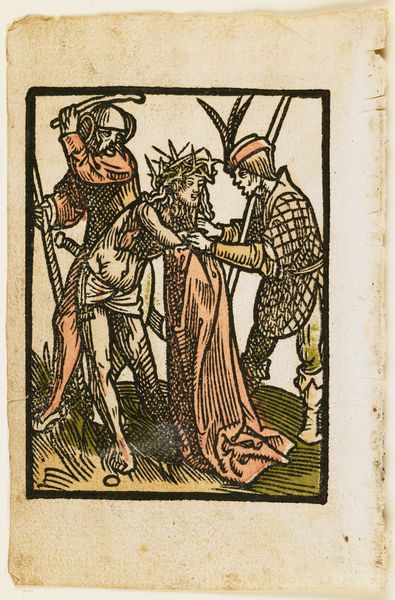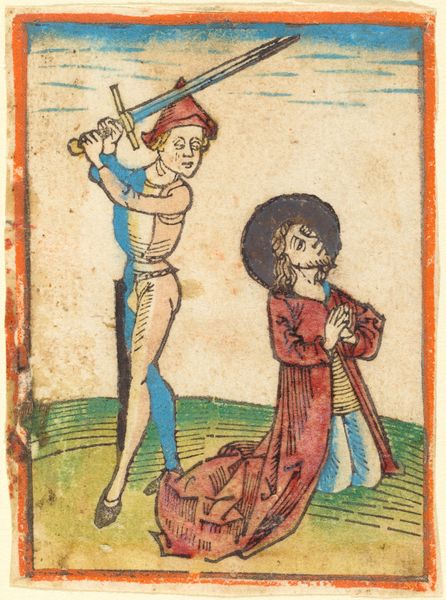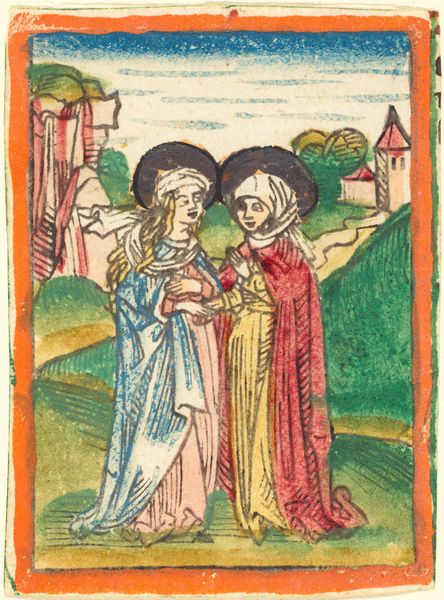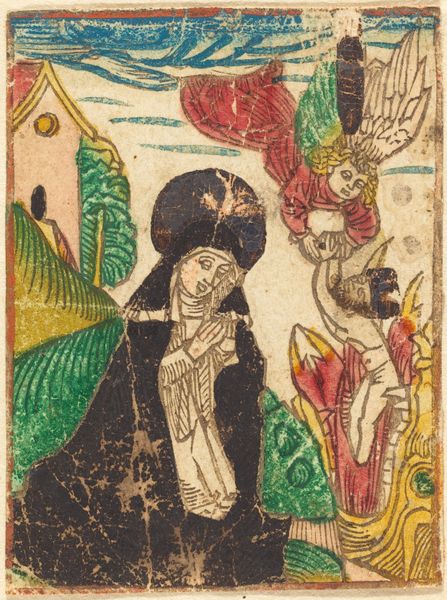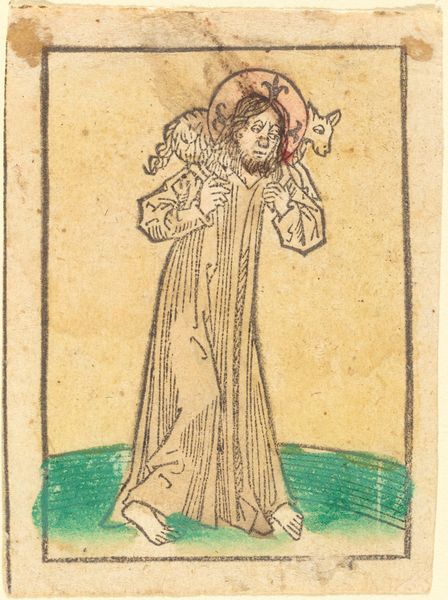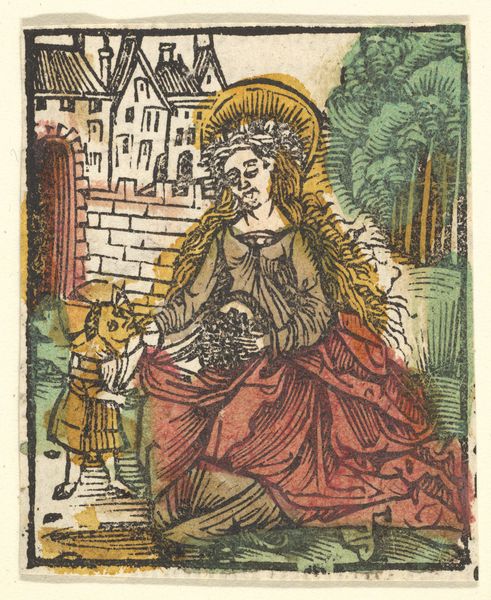
print, woodcut
#
medieval
#
water colours
#
narrative-art
# print
#
figuration
#
coloured pencil
#
woodcut
#
history-painting
#
watercolor
Copyright: National Gallery of Art: CC0 1.0
This woodcut depicts the Martyrdom of Saint Barbara and presents a vivid scene dominated by symbols of faith and violence. The tower, a prominent symbol, represents Saint Barbara’s imprisonment and her steadfast devotion despite her confinement. The act of martyrdom, the execution by the sword, reminds me of similar images of sacrifice across cultures and times. Think of Judith beheading Holofernes—the recurring motif of the hero’s triumph over an oppressor. But here, the meaning shifts: Barbara’s martyrdom is not a victory in the earthly sense, but a spiritual triumph. We see the chalice, another symbol of her faith and sacrifice. It reappears in various contexts, most notably in representations of the Last Supper. There is a psychological dimension to the image of martyrdom. It evokes powerful emotions—fear, pity, and reverence—connecting us to deep, subconscious archetypes of suffering and redemption. Consider the cyclical nature of such symbols: they reappear, evolve, and take on new meanings in different historical contexts. The image of the tower, the sword, the chalice, all endure as potent carriers of cultural memory.
Comments
No comments
Be the first to comment and join the conversation on the ultimate creative platform.

